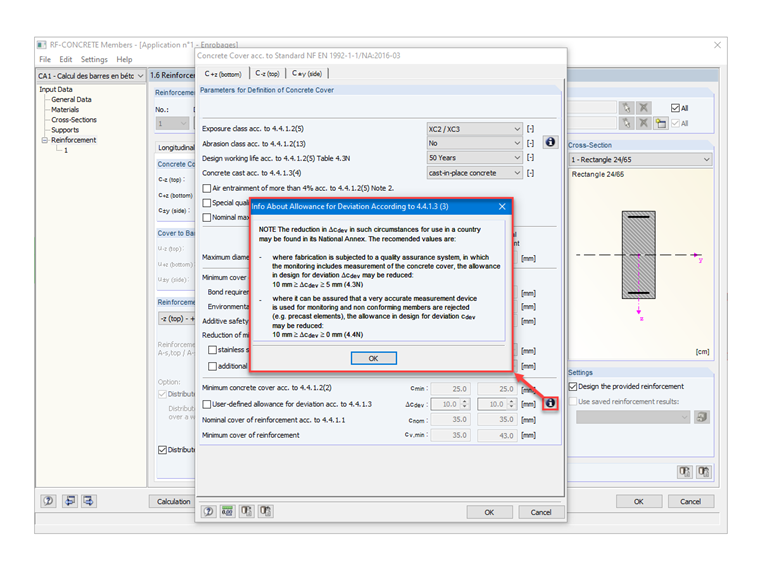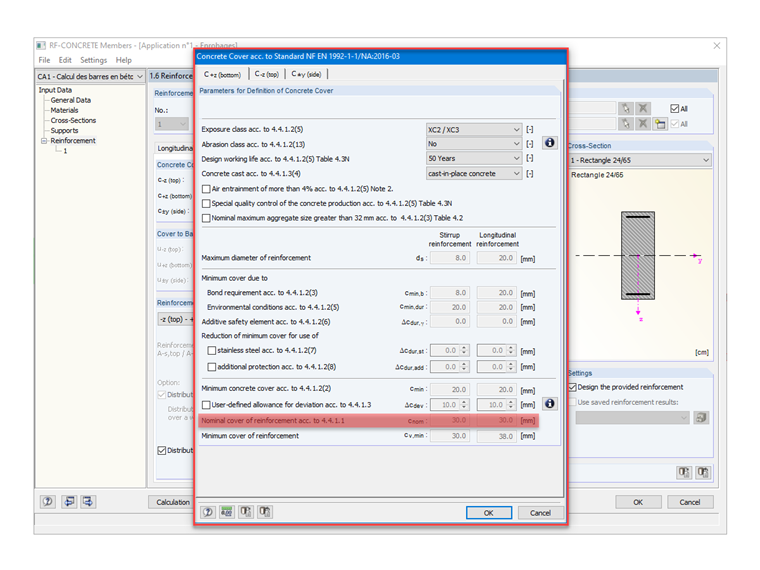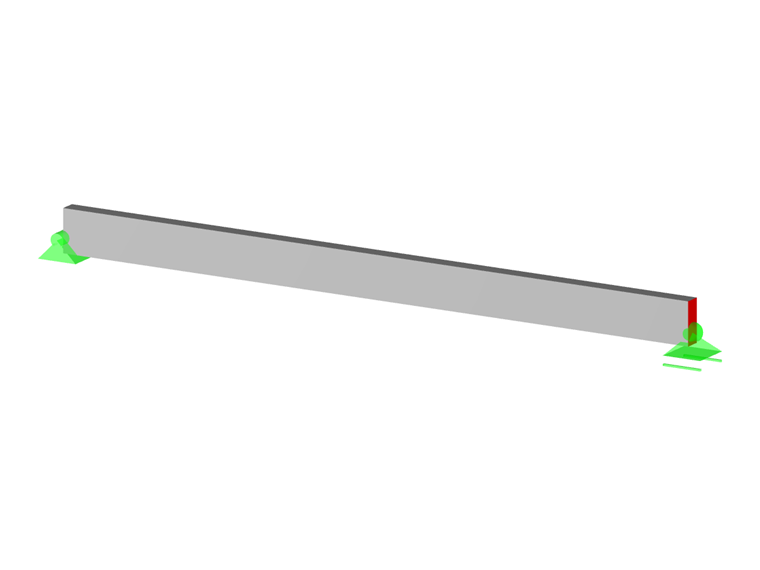What is concrete cover?
Concrete cover corresponds to the distance between the concrete surface and the nearest reinforcement steel. In fact, it is defined by cnom, which takes into account a minimum cover as well as a calculative range for execution tolerances.
Nominal cover
|
cnom |
Enrobage nominal des armatures |
|
cmin |
Enrobage minimal de béton |
|
∆cdev |
Tolérance de déviation |
What is the minimum concrete cover to take into account?
Minimum Concrete Cover
|
cmin,b |
Enrobage minimal dû à l'exigence d'adhérence |
|
cmin,dur |
Enrobage minimal dû aux conditions d'environnement |
|
∆cdur,γ = 0 |
Élément additionnel de sécurité (valeur recommandée) |
|
∆cdur,st = 0 |
Réduction due à l'utilisation d'acier inoxydable (valeur recommandée) |
|
∆cdur,add = 0 |
Réduction due à l'utilisation de protection additionnelle (valeur recommandée) |
Minimum Cover Due to Adhesion Requirement
|
∅ |
Diamètre de l'armature |
|
∅n |
Diamètre équivalent (cf. §8.9.1 de l'EN 1992-1-1) |
Minimum Cover Due to Environmental Requirements
The recommended values of cmin,dur are given in Table 4.4N of EN 1992-1-1. This table specifies the cover in mm to be considered according to the structural class and the exposure class.
How are the environmental conditions determined?
First and foremost, the protection of a structure is considered according to the duration of the project's use and the intended usage: this is the structural class. Then, the cover will depend on the structure's exposure to physical and chemical conditions: this corresponds to the exposure class.
These environmental conditions depend on the compactness of the concrete and its quality. Thus, it is indirectly the water/cement ratio that makes it possible to determine these conditions based on the concrete strength class.
This is why the Eurocodes recommend Table 4.3N of EN 1992-1-1, which is a structural classification table making it possible to increase or decrease the structural class of a structure, depending in particular on the concrete strength class.
This way, the first two parameters can be assimilated in a project of which the service life is expected to be 50 years (structural class S4), with exposure conditions of class XC2/XC3 (corrosion induced by carbonation in a humid environment). It will then have two cover possibilities, depending on the strength class:
- cmin,dur = 25 mm for concrete C30/37 or less (Table 4.4N)
- cmin,dur = 20 mm for concrete C35/45 or more (Table 4.4N + Table 4.3N)
Other parameters that can be defined in RF-CONCRETE
In RF-CONCRETE Members, for example, we have the option to modify the numerous parameters allowing the determination of the cover's value:
- Abrasion class
- Manufacturing type
- Air entrainment
- Special quality control of concrete production
- Maximum aggregate size
Application of Theory Using RF-CONCRETE Members
In this article, we will analyze the results obtained automatically during the search for the minimum cover according to the standard. Below, we consider the same parameters as previously described in detail:
- Structural class: S4
- Exposure class: XC2/XC3
- Concrete strength class: C30/37
- Aggregates: dg = 25 mm
- Diameter of longitudinal reinforcement: ϕ = 20 mm
- Diameter of transverse reinforcement: ϕt = 8 mm
In order to automatically determine the concrete cover with RF-CONCRETE Members, image 01 describes the steps that must be performed.
Image 02 below shows the parameters defined according to our example. Ensure that the standard is selected in the "General Data" window and the concrete strength class is defined in the "1.2 Materials" window.
Allowance for deviation
As we can see in Image 02, the value defined by default is the one recommended by the Eurocodes; that is, 10 mm. However, depending on the quality of the cover monitoring, this parameter can be defined in RF-CONCRETE Members by the user, following the advanced recommendations of the Eurocode, according to Image 03.
Thus, the nominal cover according to the standard is: cnom = 25 + 10 = 35 mm.
Comparison with French National Annex
By way of comparison, we take note of the difference in results for identical conditions as before, but this time we apply the standards relating to the French National Annex.
The nominal cover has been reduced to 30 mm.
This can be explained by the modulation of the structural class recommended by the French National Annex according to Table 4.3NF, which allows a reduction of the structural class based on a concrete of resistance C30/37 going from S4 to S3, as in our case. The reading of Table 4.4N is therefore modified and the value of cmin,dur is lower, corresponding to the structural class S3.
Application in Other Add-on Modules
The RF-CONCRETE Surfaces and RF-CONCRETE Columns modules also make use of the automatic concrete cover function according to the standard, following the same procedure described in this article.





